The Starlink Performance Kit has a new option for DC power which has been a long-requested feature for boats. I cut apart the DC cable, test both AC and DC power, and investigate some of the specs.
If you prefer a video format, there's one above!
Advanced Power Supply
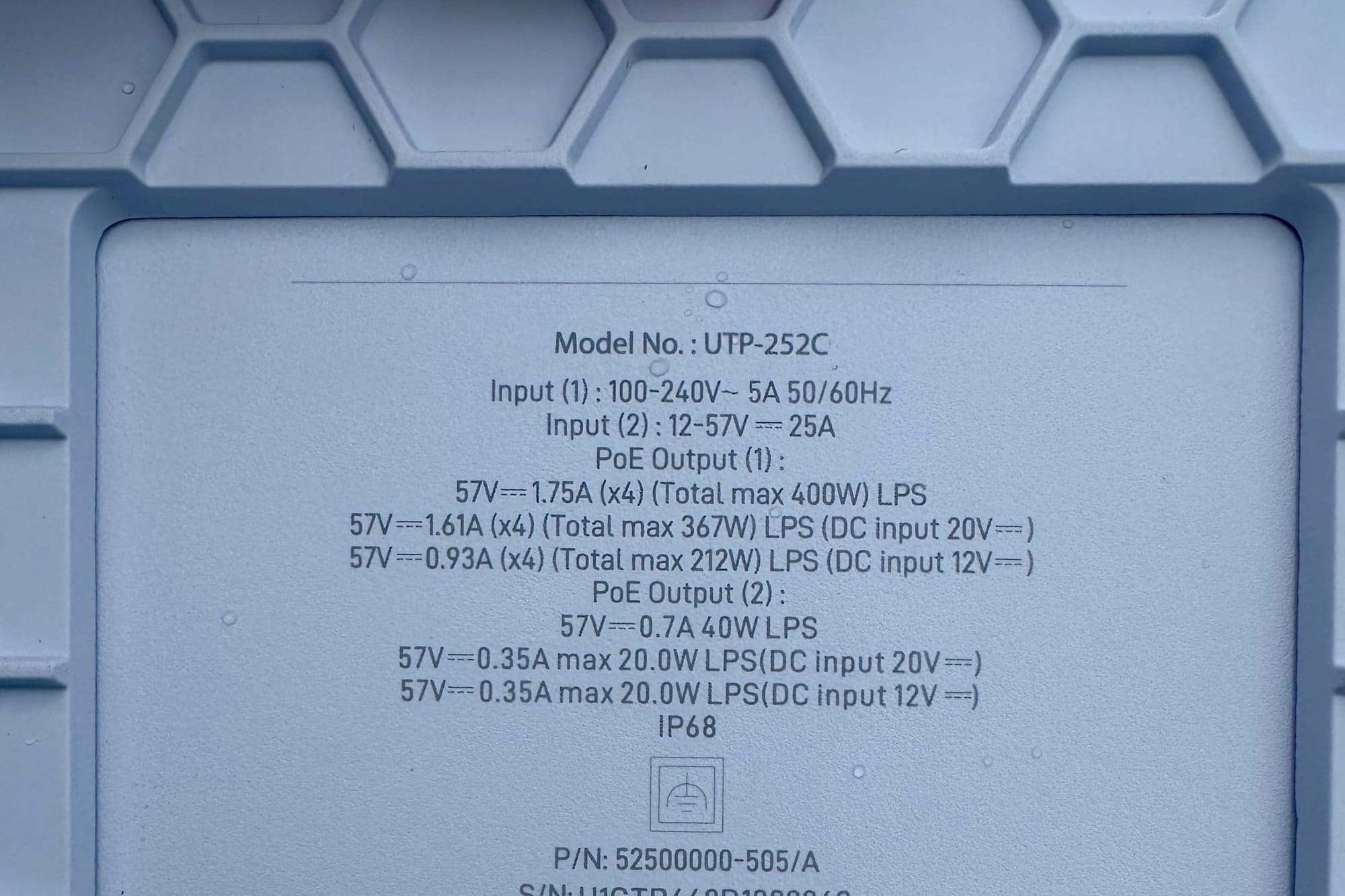
At the heart of all of this is the advanced power supply. There are a few things I noticed when digging into the specs:
- DC power can't achieve the same maximum as AC power
- Starlink recommends 20 volts minimum DC power for full functionality
We'll delve into both of these below.
From the Durability Guide:
"Starlink Advanced Power Supply DC input was qualified for input voltages from 10.5V to 57V. However, it is recommended to power the system at DC voltages above 20V when possible. At lower input voltages, output power will be reduced to limit the total amperage from the power supply to less than 20 amps. In these cases, user terminals demanding high power (very high throughput with snow melt active) may throttle due to the power limitation."
I'm super happy that the power supply will survive down below 12 volts to a low of 10.5 volts. This will come in handy when your batteries are low, or a big appliance kicks off.
What is interesting is that Starlink recommends using a minimum of 20 volts for best performance. Anything less will reduce the overall DC amperage draw to 20 amps, and reduce your overall wattage. It also will reduce potential performance and snow melt.

In my case, I am supplying around 12 volts DC power, so I will only be able to achieve about 230 watts if I estimate that point on the graph above. While I will likely need snow melt during the winter, and I would like higher throughput (I assume this comes with the newer v3 satellites and gigabit speeds), I think I'd rather have better power usage as a trade off.
If I wanted to get to the higher output range, I could throw a 12 to 24 volt converter in the mix and provide the power supply with something more than 20 volts, but now we're converting power, and there will be loss.
Also, for my boating profile, being at sea level all of the time, I don't get huge snowfall, so I may not need as much snow melt capacity as someone who is at a higher elevation with higher snowfall totals.
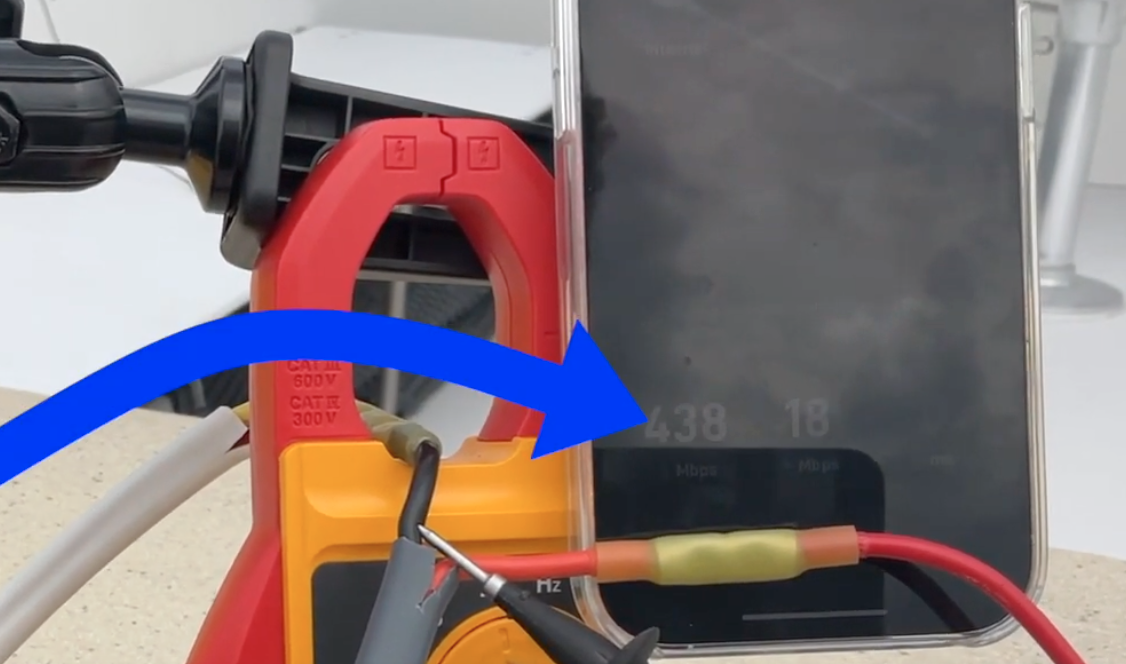
I also have not seen any performance impacts to using the power supply with 12 volt DC as you can see above. One of the highest speed test results I've ever seen with any Starlink dish aboard a boat - 438 Mbps download speed!
Need help with Starlink, internet, or choosing a cellular plan? 🚤📡
📅 Book a free 30-minute call with me and get expert advice tailored to you!
AC Power Testing
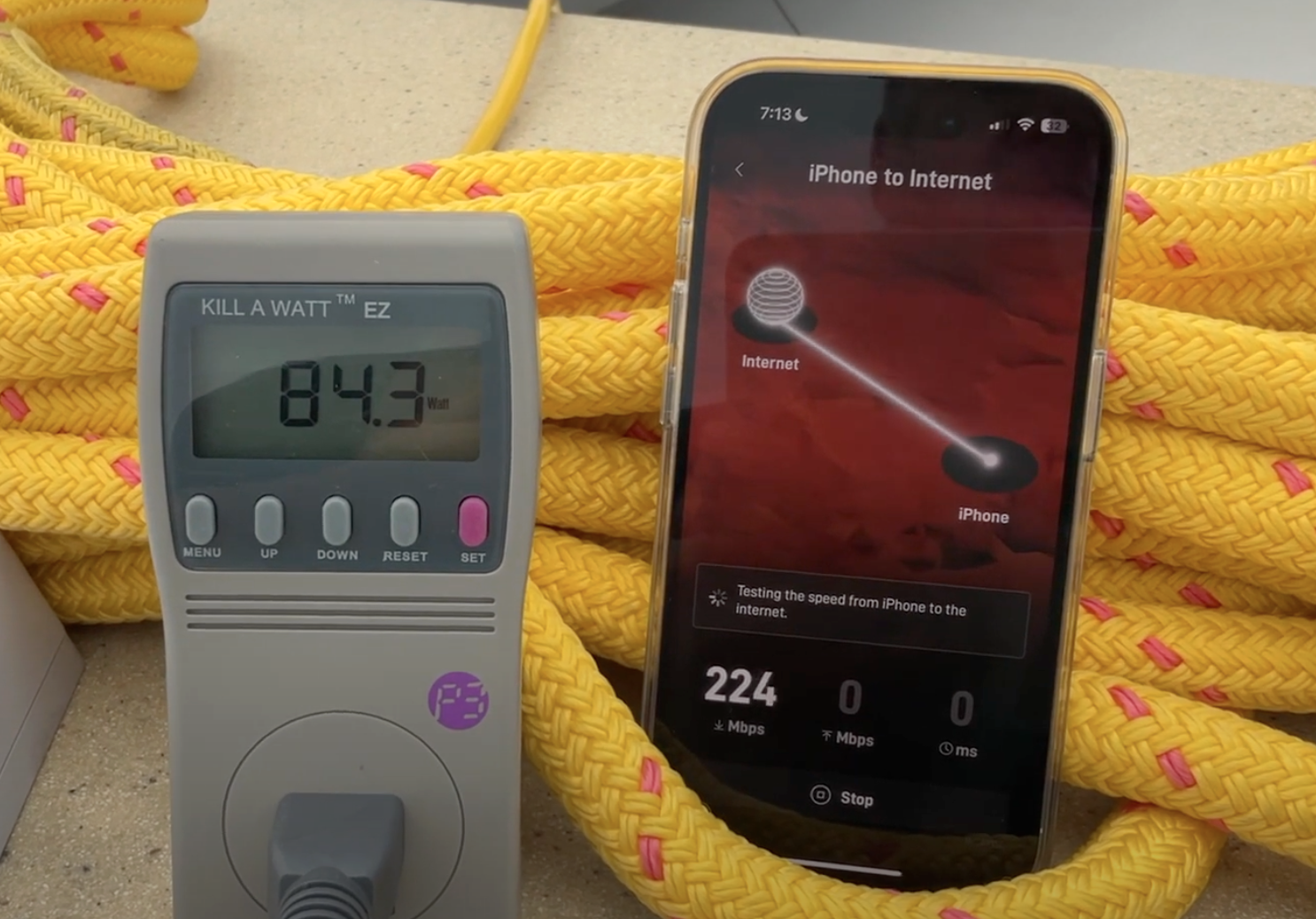
AC power testing was pretty straightforwards. I used a Kill A Watt meter to record how much the system was using. I did 40 tests and came up with these general averages:
- Boot up: 25 watts
- Searching for satellites: 78 watts
- Normal use: 40-50 watts
- Speed test: 85 watts
DC Power Cable
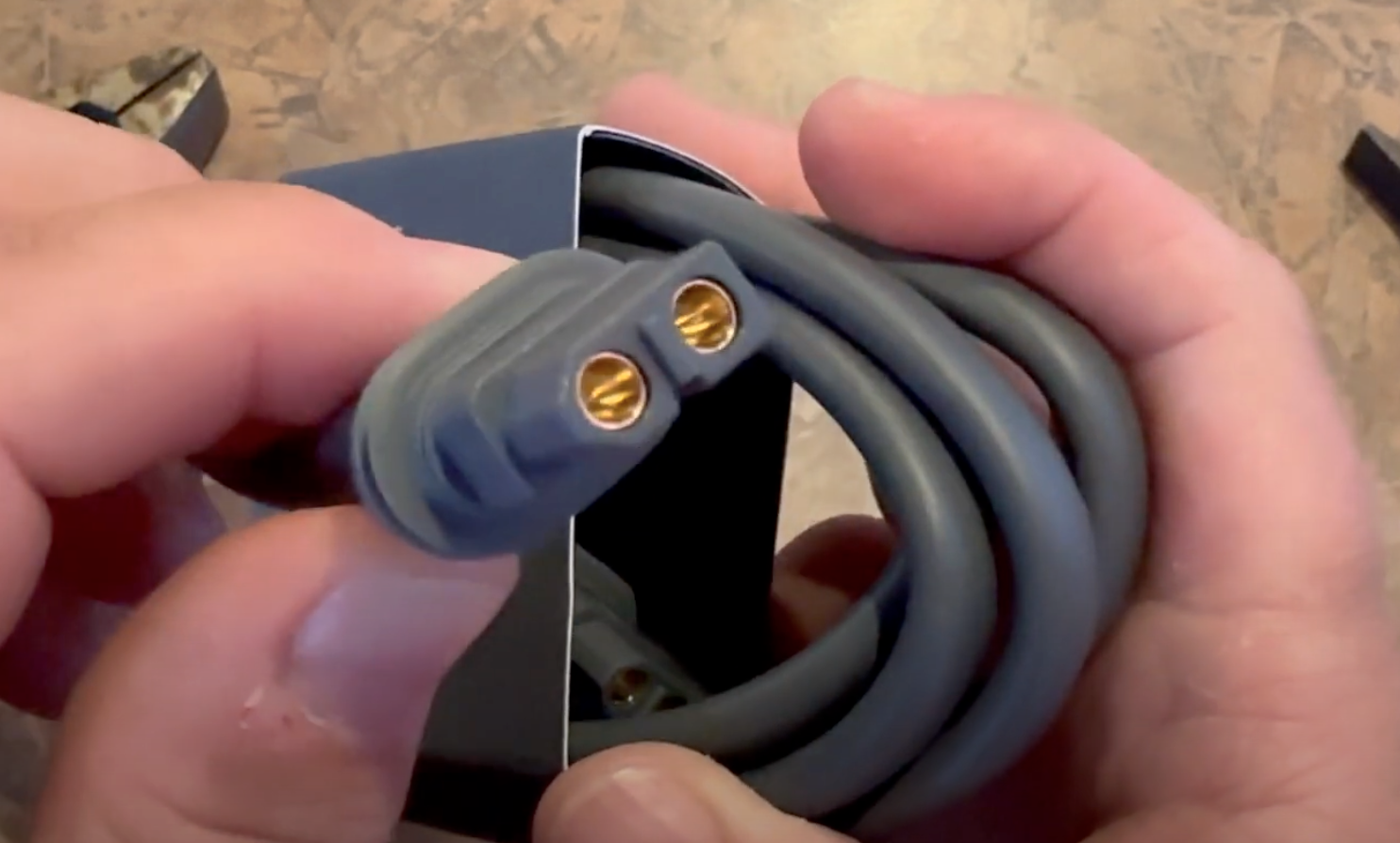
The provided DC power cable appears to have XT60 ends. I chose to cut the cable and investigate the wire inside.
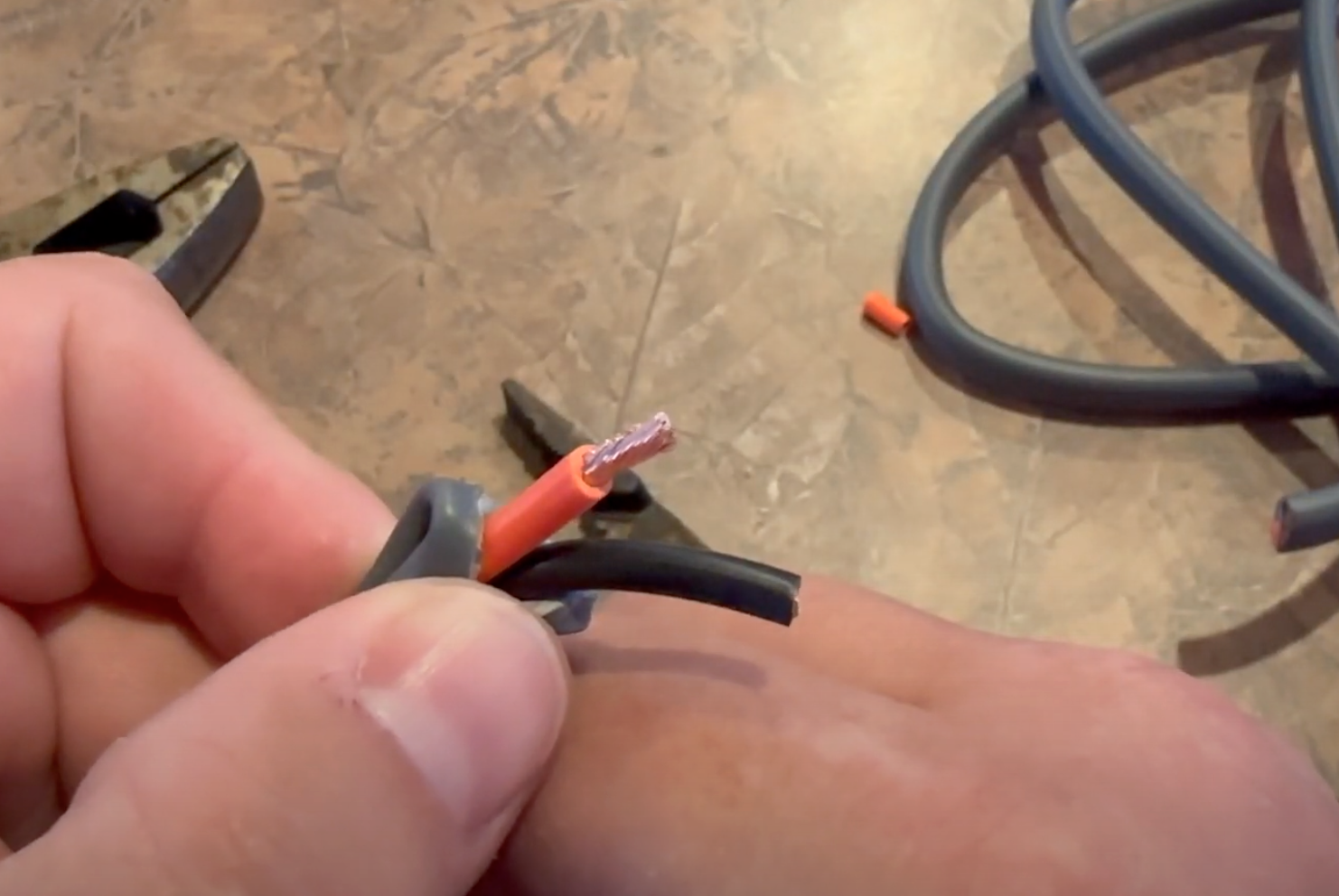
The wire inside appears to be 10 AWG or something similar. It is not tinned, so I recommend trying to keep it as waterproof as possible if you cut it by using heat shrink butt connectors or something similar.
I chose to use 10 AWG marine-grade wire to extend this wire down to a DC panel. I also installed a blade-type 20 amp fuse in the wire as close to the power supply as possible.
I chose a 20 amp fuse because the Durability Guide indicates the max amp draw for the power supply at anything less than 20 volts is 20 amps of DC. I still sized my wire at 10 AWG to cover the max of 25 DC amps.
DC Power Testing

DC power testing was a little more involved. I used a voltmeter to measure the real-time volts and a clamp meter to monitor the DC amperage, and a I did 40 tests and came up with these general averages:
- Boot up: 25 watts
- Searching for satellites: 95 watts
- Normal use: 40-50 watts
- Speed test: 92 watts
So it used a bit more power than the AC option during the most intensive things, but still pretty close overall.
Results

DC power testing has shown that on a 12 volt DC system, the Starlink Performance Kit uses between 2 and 8 amps of DC power. This is without using snow melt or any other options. This translates to 25-96 watts.
AC power testing shows a range of 25-85 watts of power usage.
You might conclude that AC power is slightly more efficient, but the above does not take into account inverter inefficiencies, and the fact that you need more components to run off of AC power, most notably the inverter itself.
Generally speaking, running the Starlink Performance Kit off of DC power is going to be slightly more efficient than on AC power provided by an inverter. However, running it at anything less than 20 volts DC power limits the total power available, which may reduce performance or things like snow melt.
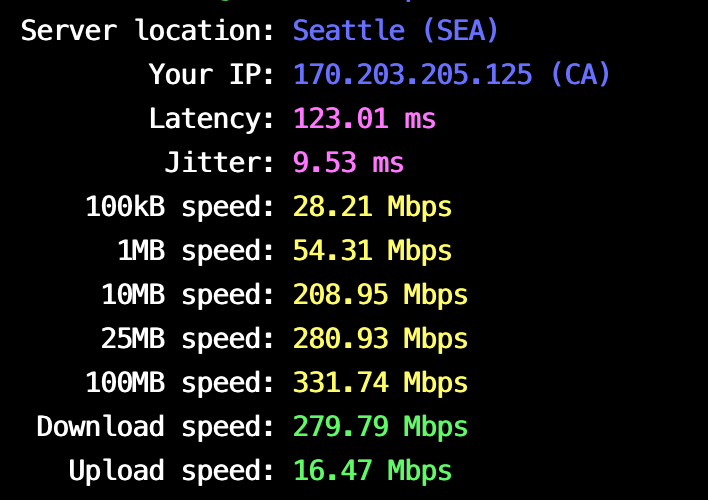
I have not seen any reduction in performance by running on DC power, and I assume Starlink may mean that the future gigabit speeds may be reduced, as those probably require more power.
Conclusion
If you have DC power available, I would recommend using that over AC power for several reasons:
- More efficient than using inverted AC power due to losses in inverters
- Simpler - internet will still work even if inverter fails
However, if you require significant snow melt capabilities, and are powering it from a DC power source that is less than 20 volts, you may wish to use AC power.
If you have a 24 volt or higher DC power source, I would definitely recommend running the system from DC power.
In all cases with DC power, ensure that you have an appropriate sized set of source wiring and a proper fuse. If you don't know what that might be, engage a qualified electrician (did you know I'm one!?) to ensure you don't cause a problem or worse! Also, try to get the Starlink Power Supply as close as possible to the DC power source so that voltage drop is minimized.

